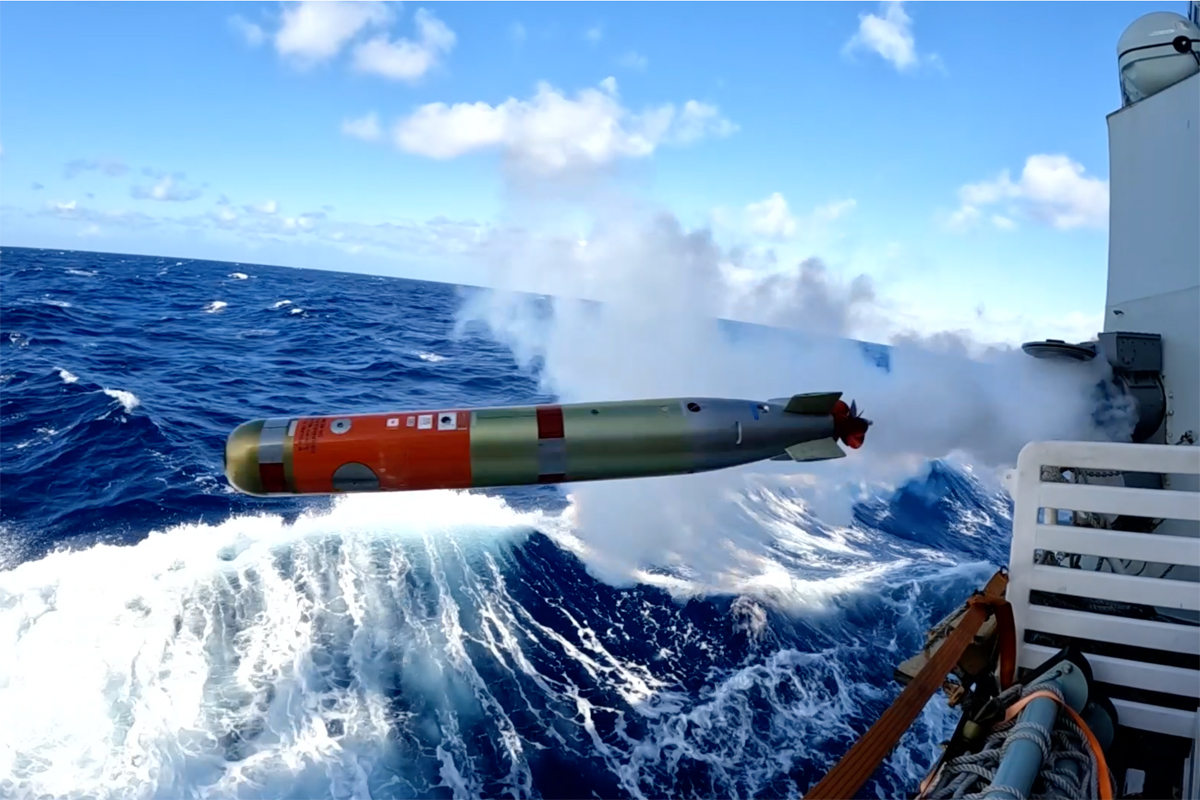On the Hunt: HMCS Winnipeg conducts Anti-Submarine Warfare training
By Lookout Production on Aug 24, 2022 with Comments 0
Capt Christine MacNeil,
HMCS Winnipeg PAO
—
The operations team in HMCS Winnipeg had the opportunity to detect, track, and fire torpedoes at an ‘enemy’ submarine as part of the anti-submarine warfare (ASW) training during Exercise Rim of the Pacific (RIMPAC) 2022 off Hawaii’s coast.
“Our operators undergo years of specialized training to gain proficiency in submarine detection,” said Royal Canadian Navy (RCN) Lieutenant (Navy) Andrew Chong, Underwater Warfare Officer with Winnipeg. “They have studied and practised through training exercises and simulations, but that can only take you so far. The ability to train with real submarines live at sea cannot be replicated, so these are important opportunities to put our skills to the test.”
Tracking a submarine takes focus and patience.
During the recent Combined Anti-Submarine Warfare Exercise (CASEX) with a United States Navy submarine playing the part of the ‘enemy’ sub, the Sonar Operators’ (Ops) focus and patience were put to the test.
When intelligence indicated an ‘enemy’ submarine in the area, the ship employed underwater sensors to locate the sub, including the towed array sonar, hull-mounted sonar, and launching Guardian, the CH-148 Cyclone helicopter (helo). Once those measures were taken, the Ops operated their consoles and monitored incoming audio and visual information. Their training and skillsets were tested as they tried to find the indicators of a submarine in all the oceanic noises.
In this particular exercise, the first hit was made by the most junior member of the Sonar Team, Sailor Third Class (S3) Mohammad Hamaad Kazmi.
“This was the first opportunity to implement my training in real time,” S3 Kazmi said. “I felt pretty good when I found it.”
With the contact confirmed, the ship maintained contact at the greatest possible distance, and the coordinates of the submarine were relayed to the helicopter via the Shipborne Air Controller. The helo then moved to that area and dipped their sonar to pinpoint the exact location of the sub.
At this point during a real combat situation torpedoes would come into play. However, for the exercise, voice contact was made via the underwater telephone to inform the sub’s crew they had been found. The sub then surfaced briefly before submerging again to begin another training run.
“I am incredibly proud of how my team worked together to detect, identify, and track all the submarines we are working with,” said Petty Officer First Class (PO1) Jonathan Rielly, Underwater Warfare Director.
Two days later the team trained for the torpedo counter-firing during a TORPEX, or torpedo exercise. As in the CASEX, the Sonar Ops worked with the ship’s helo to determine the precise location of the submarine. This time two CH-148 helicopters were participating, Guardian and Canuck from HMCS Vancouver. With three assets working together, the team located the submarine quickly, and the submarine fired an exercise torpedo at HMCS Winnipeg. The ship counter-fired its torpedo and began evasive maneuvers. Guardian also dropped its torpedo in defence of the ship. The exercise was repeated in the afternoon, culminating in the successful launching of four exercise torpedoes.
The torpedoes used for this training serial were MK-46 exercise torpedoes. Exercise torpedoes have no warhead and are not fully fueled; when they reach the end of their propellant, they float to the surface, where they are picked up by Range Safety personnel.
The ability to detect, track, and hunt enemy submarines is vital for RCN frigates, as it allows the ship’s Commanding Officer to address underwater threats while maintaining a safe distance. With the detection of the submarine and the successful launching of torpedoes, the CASEX and TORPEX proved the capability of both the ship, the crew and the air detachment to work as a competent and effective team.
RIMPAC provides a unique and invaluable training opportunity for the Royal Canadian Navy. It supports advanced team training in a complex, multinational maritime environment and is an opportunity to prove high-level combat capabilities through live-fire exercises using world-class weapon ranges.
Twenty-six nations, 38 ships, three submarines, more than 170 aircraft, and 25,000 personnel participated in RIMPAC from June 29 to Aug. 4 in and around the Hawaiian Islands and Southern California. The world’s largest international maritime exercise, RIMPAC provided a unique training opportunity while fostering and sustaining cooperative relationships among participants critical to ensuring the safety of sea lanes and security on the world’s oceans. RIMPAC 2022 was the 28th exercise in the series that began in 1971.
Filed Under: Top Stories
About the Author:






